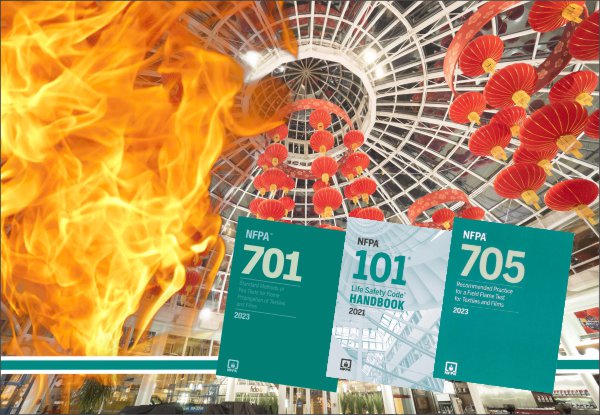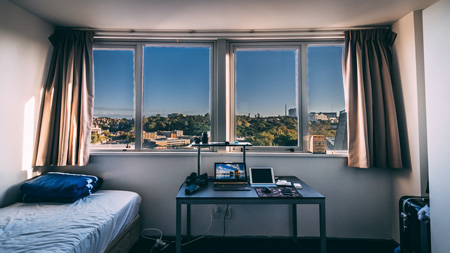
Fire safety with textiles, wood, decorations and artificial foliage is a real issue as they represent a large amount of combustible materials in a public space.
Regulatory Compliance Summary: Understanding The Fire Code
There is no national code, as a result there is a patchwork of regulations, administered at the local state level, or in the case of New York City and Boston, by municipality. Typically, fire codes reference National Fire Protection Association Standards (NFPA) which sets the standards in North America with the Life Safety Code 101. Others reference the International Fire Code. Some states such as California, have implemented a higher level of standard than that set out by the NFPA. Also, individual venues, or institutions, school districts may have set their own standards as they relate the textiles and their flammability. Ultimately, it is “the local authority having jurisdiction” who has the final say which is the local fire department.
To Better Understand The Fire Code, It Can Be Summarized as What, Where, Which Test & When.
What: Drapes, curtains, netting, and other similar or decorative materials, including textiles and films used in buildings. Includes: Artificial plants & foliage, upholstered items, wicker & decorative pillows, live / artificial Christmas trees, tablecloths / covers, corn stalk & corn mazes, backdrops / wall coverings, hay bales & fall decorations, carpets on floors / walls & area rugs, tents / canvas & umbrellas, displays (tradeshows), stage sets, costumes / wigs, soundproofing foam, thatching or any other materials used in public buildings.
Where: Lobbies or exits of any public building, care, treatment and detention facilities, any room with occupancy greater than 100, any open floor area greater than 16,000 ft.
Which Test: Typically, regional state fire code follows the guidance of the NFPA, when it comes to textiles. For new textiles in public buildings, NFPA 701 is typically used in the US. In California, it is TB-117 and Title 19 Division 1, Chapter 8. NFPA 705 testing is required on an on-going basis to ensure continued protection.
When: Fabrics should be professionally dry cleaned and re-treated with flame retardant every 3-5 years. Even inherently flame retardant (IFR) fabrics will fail the flame test once they are dirty. If documentation cannot be located, a NFPA 705 test should be conducted to determine flammability.
Flame retardants can be applied to a wide variety of items including textiles, wood, artwork, trees and many other items. They work by creating a thermal barrier between the combustible materials and the flames. Items must be professionally dry cleaned prior to the application of flame retardants to be effective and avoid voiding the manufacturer’s warranty.
When it comes to fire safety, proactive is the only way to go. Be sure to include flammability testing of all drapes, decorative materials and props into your annual safety inspection regime. Not sure if your facility is in compliance? Contact On-Site today to arrange NFPA testing. Our team will show you the least cost method of achieving fire code compliance.

